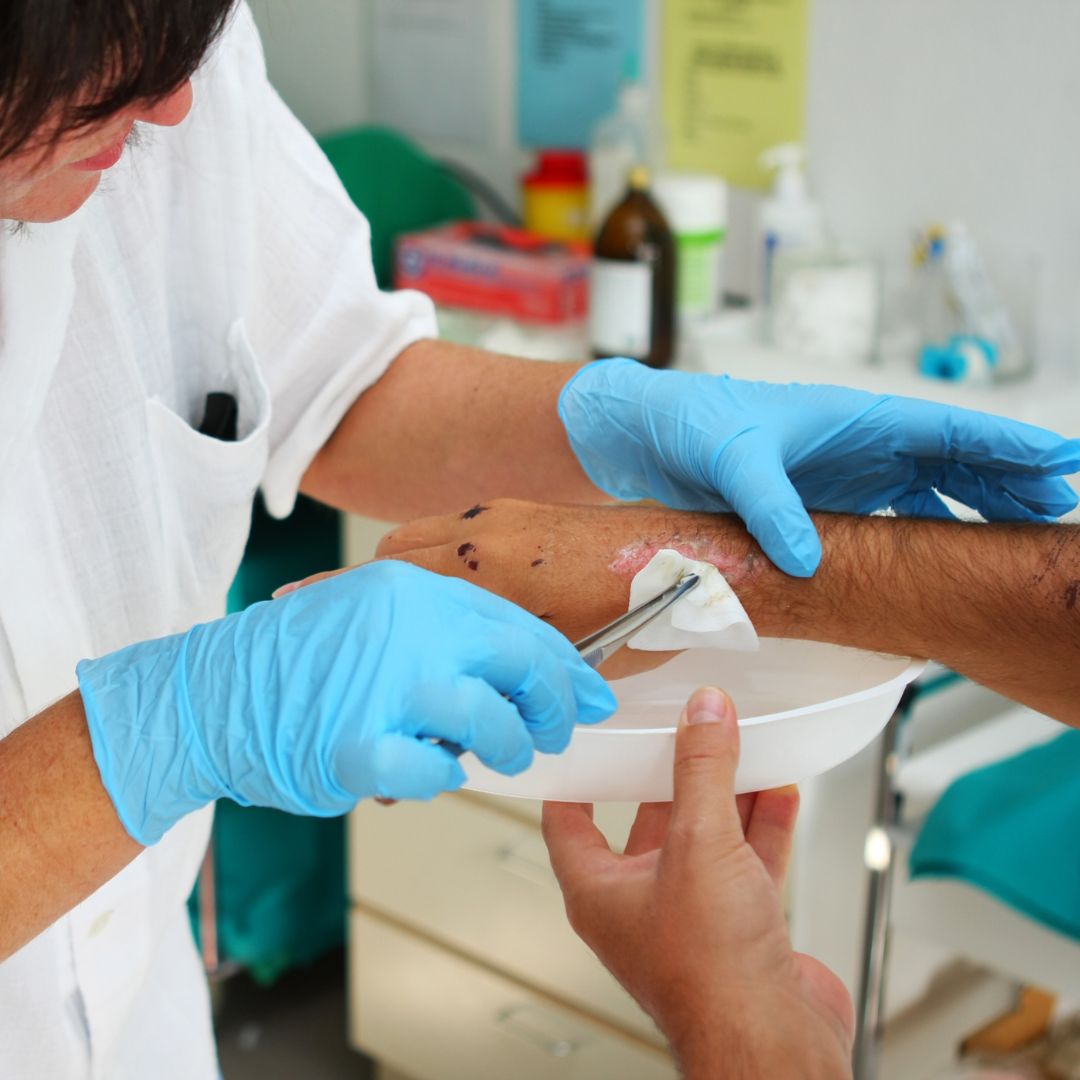Introduction
Wound treatment monitoring is a vital element of health care, especially in the therapy of persistent injuries and intricate injuries. Whether it's a straightforward cut or a much more challenging ulcer, efficient wound monitoring can significantly influence healing end results. Proper approaches not only expedite recovery but also minimize the threat of infection and complications. As healthcare professionals, recognizing these approaches is paramount. In this article, we dive deep right into Wound Care Administration: Approaches for Effective Outcomes, including numerous aspects such as training for professionals, nursing education and learning, and advanced methods for taking care of complex wounds.
1. Understanding Injury Care Management
1.1 What is Wound Care Management?
Wound treatment monitoring describes the systematic approach to treating wounds with proper assessment, diagnosis, and therapy methods. It consists of every little thing from cleaning and clothing wounds to monitoring healing progress.
1.2 Value of Wound Care
Effective wound treatment is crucial due to the fact that it aids stop infections, promotes quicker recovery, and ultimately decreases healthcare prices associated with extended treatments.
2. Types of Wounds
2.1 Intense Wounds
Acute wounds are those that heal quickly without problems. They generally arise from surgical treatment or unintentional injuries.
2.2 Chronic Wounds
Chronic injuries persist in time and are typically related to hidden conditions such as diabetic issues or vascular disease.
3. The Function of an Injury Care Specialist
3.1 What Does a Wound Care Expert Do?
A wound treatment specialist concentrates on identifying and dealing with numerous kinds of injuries utilizing specialized understanding and techniques.
3.2 Training Needed for Specialists
To become a wound care expert, one have to go through strenuous training that consists of both theoretical knowledge and useful skills.
4. Wound Care Professional Training
4.1 Review of Educating Programs
Training programs for injury care professionals vary extensively but often include coursework on anatomy, physiology, and the current injury care technologies.
4.2 Certification Options Available
Various organizations provide accreditations in wound care management that enhance trustworthiness and knowledge in the field.
5. Wound Care Training for Nurses
5.1 Relevance of Specialized Training
Nurses play an essential duty in individual care; thus, specialized training in wound administration is important for providing quality medical care services.
5.2 Educational program Components in Nursing Programs
Most nursing programs now integrate components concentrated on wound care specialist training basic wound care training to furnish nurses with basic skills required in clinical settings.
6. Wound Care Training Courses
6.1 Online vs On-site Courses
With the rise of digital understanding systems, several professionals are selecting on-line wound care training courses that provide adaptability without jeopardizing on quality.
6.2 Training course Web content Overview
Typical training course content includes composition pertinent to wound healing, finest methods in clothing application, infection control procedures, among others.
7. Basic Wound Care Training Essentials
7.1 Secret Skills Obtained Via Basic Training
Basic wound care training outfits individuals with skills like cleaning strategies, applying dressings effectively, and acknowledging signs of infection.
7.2 Relevance of Hands-on Practice
Theory alone isn't sufficient; hands-on technique is essential for developing confidence and effectiveness in taking care of injuries effectively.
8. Advanced Methods in Complicated Wound Care
8.1 Understanding Intricate Wounds
Complex wounds need customized treatments because of their nature-- typically involving much deeper cells or underlying health problems that prevent healing processes.
8.2 Treatment Modalities
Advanced modalities include adverse stress wound treatment (NPWT), bioengineered tissues, and other cutting-edge strategies customized to advertise healing in complicated cases.
9. Chronic Wound Care Management Strategies
9.1 Identifying Underlying Causes
Identifying the root cause of chronic wounds-- be it bad blood circulation or diabetes mellitus-- is vital for efficient treatment plans.
9.2 Multidisciplinary Approach
An effective persistent injury management strategy frequently entails collaboration among numerous healthcare providers including dietitians, foot doctors, and physical therapists.
10. The NDIS (National Impairment Insurance Coverage Scheme) & Injury Care
10.1 NDIS Support Services
For people under the NDIS structure requiring ongoing wound management assistance solutions are essential to ensure they obtain appropriate treatment tailored to their needs.
10.2 Funding Options Available
Understanding financing alternatives offered with NDIS enables individuals to accessibility required therapies without economic burden.
Frequently Asked Questions (Frequently asked questions)
Q1: What qualifications do I need to come to be a wound care nurse?
A: Usually needs a nursing degree along with specialized certification in injury monitoring gotten with recognized programs or training courses concentrated on nursing wound care training.
Q2: The length of time does it require to complete a wound care training course?
A: Course period varies; nevertheless, many online programs can be finished within several weeks while extensive qualification programs might take months relying on depth and timetable flexibility.

Q3: Can I handle my own chronic injuries at home?
A: While some patients can handle minor chronic wounds at home with proper education and learning from healthcare providers, serious situations should constantly be examined by specialists to avoid complications.
Q4: Why is infection control essential in injury management?
A: Infection control prevents issues that can occur from unattended infections which might delay healing or cause more severe health and wellness issues requiring considerable clinical intervention.
Q5: Exist certain items suggested for persistent wound management?
A: Yes! The choice of items depends on the kind of persistent injury; typical alternatives consist of hydrocolloid dressings, alginates, foam dressings etc, tailored based upon private requirements assessed by healthcare providers.
Q6: Exists recurring education offered after first certification?


Conclusion
In verdict, effective Wound Treatment Monitoring: Techniques for Successful Outcomes rely greatly on proficient experts who understand both standard principles and advanced techniques vital for advertising optimal recovery conditions throughout diverse client populaces-- from severe injuries needing instant interest to complex persistent injuries requiring continuous analysis and intervention approaches tailored in the direction of all natural wellness goals. By prioritizing education and learning with comprehensive training programs designed especially around evolving standards within this dynamic field-- medical care experts can enhance their capability delivering extraordinary solution while guaranteeing positive client experiences generating successful results over time.